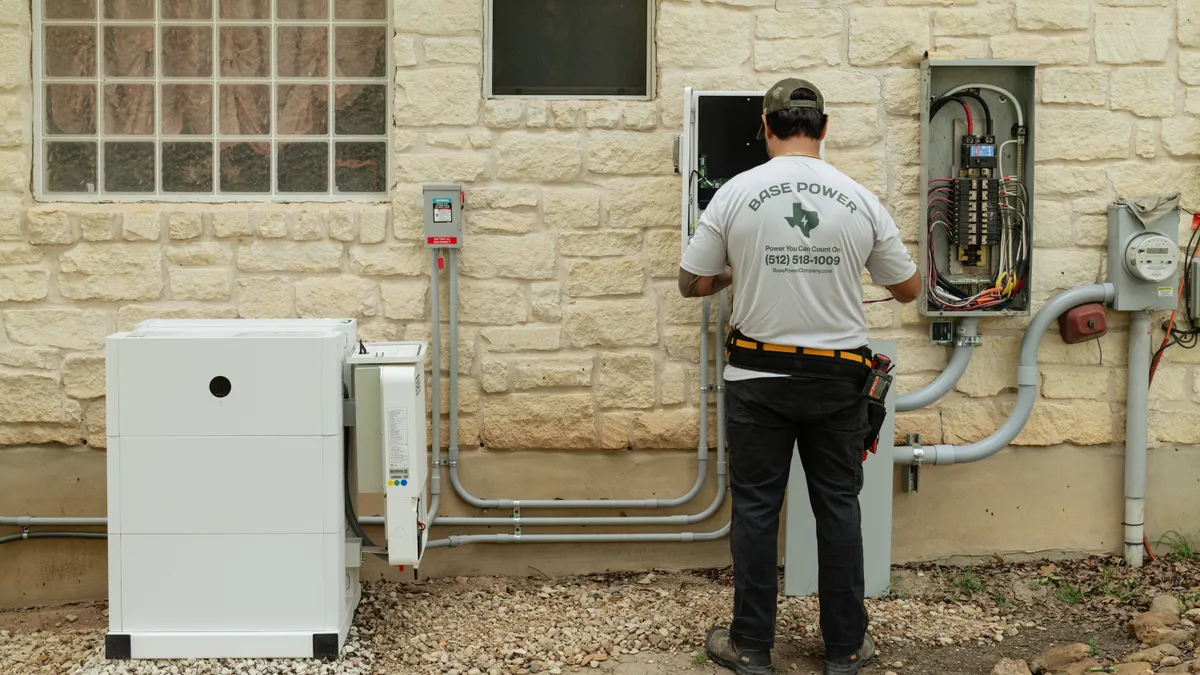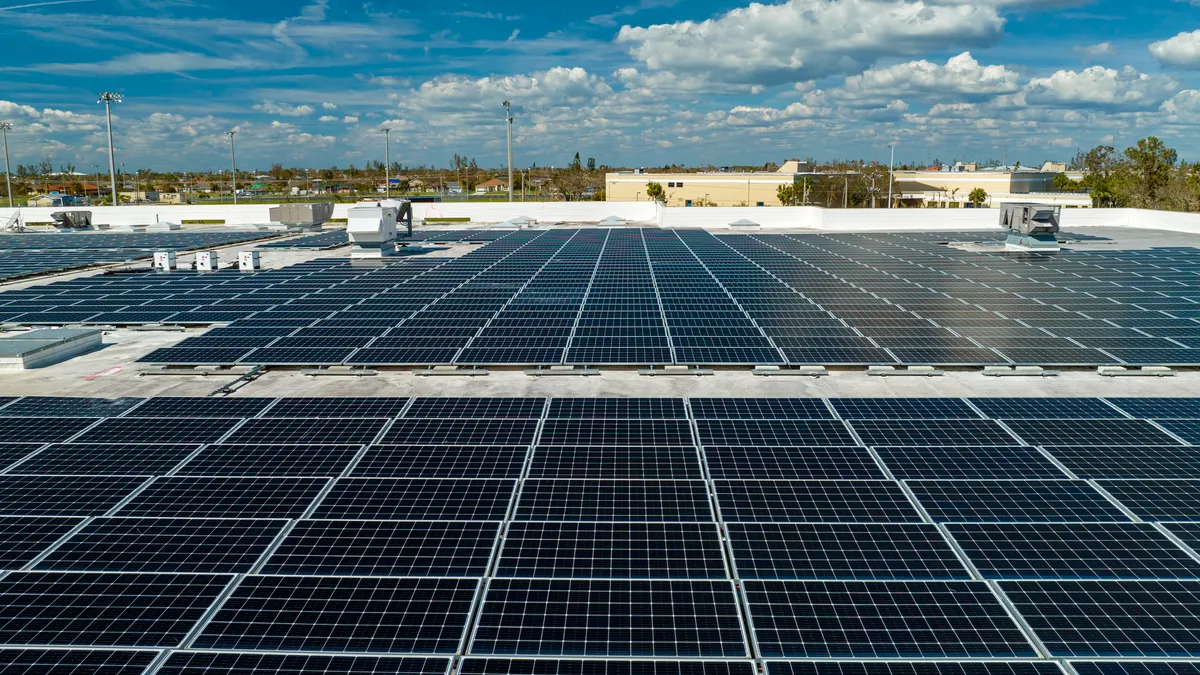At first glance, Opower’s mission—“to motivate everyone on earth to save energy”—seems to be in direct opposition to the electric utility business model.
Which is, at its most basic level, to sell electricity.
None of this would be a problem if Opower didn’t work directly with utilities. But Opower—one of the largest and fastest-growing energy efficiency companies in the country—partners with 90 utilities to reach 22 million of their residential customers around the world. So what’s the catch?

I thought it was the one topic (besides their reportedly in-the-works IPO) that Yates would steer clear of.
But that was not the case.
Opower’s rise: From startup to IPO
Opower was not always Opower.
When Dan Yates and Alex Laskey founded Positive Energy, an energy efficiency company, in 2007, the company had a simple goal: “What if we could make a better utility bill?”
But CEO Dan Yates says the idea was inspired by something bigger than a utility bill.
After selling his first company Edusoft, an exam assessment startup, to Houghton Mifflin for $20 million, Yates and his wife drove from Alaska to Tierra del Fuego in Argentina, expecting to experience lush, untouched vegetation and wildlife, Yates instead witnessed what he calls "environmental degradation."
He came back "convinced that it's now or never on the environment."
In 2009, Positive Energy rebranded itself as Opower and gradually ascended to the top of the energy efficiency space.
But simply calling Opower an energy efficiency company doesn’t do it justice.
Opower figured out early on that consumers are not energy efficient because it’s good for the environment or because it saves them money. No--Opower found the best way to get consumers to be energy efficient is to compare their energy consumption to that of their neighbors.
Opower marries behavioral science to energy efficiency, providing utility customers with personalized energy reports to show them how much they’re using and give them feedback on how to cut back. Opower believes there is a $2.2 billion opportunity for behavioral efficiency in the U.S. alone.
Whether it's guilt, peer pressure or wisdom of the crowds, the idea works.
Today Opower works with eight of the 10 biggest U.S. utilities and reportedly has an IPO on the way.
The power of behavioral efficiency
The truth is: Most utility customers don't actively think about how they get their power.
They simply take electricity for granted. Enter a room, flick a switch and—magic!—the lights turn on.
“Whenever I kick off a meeting with a utility client or potential client,” Yates tells me, “I draw this thing on the wall where I say: ‘Look—in utility land, you’ve got all these goals. Efficiency, demand response, customer sat[isfaction], cost to serve, low IT costs—all these things. And then you’ve got this chasm. And on the other side of the chasm, you have consumer land. And the only two things consumers want are a low bill and the lights on.'"
Opower's mission is noble, the company isn't trying to spark a wholesale paradigm shift in the utility customer consciousness. It's simply trying to pick off the easy 2-3% energy savings that come, for example, from turning off the lights when we leave the room.
"Consumers think about their energy consumption six minutes a year," Yates says. "We get it—customers do not care about this stuff.”
The trouble with energy efficiency
The problem is that utilities—who do care about "this stuff"—aren't in the business of saving energy. They're in the business of selling it. So why are utilities partnering with a behavioral efficiency company? And how is Opower convincing utilities that—when all's said and done—energy efficiency is good for them?
Yates identifies four types of utility regulatory environments in which Opower operates. And there are distinct reasons why utilities in each would want to work with Opower:
- The vertically-integrated utility model: “They don’t buy our efficiency. Or, if they do, they do it for very small, kind of greenwashing reasons.” But they are interested in peak reduction and broad-based customer engagement, for which Opower has tools like behavioral demand response.
- The utility in a competitive market: "They're buying our stuff because they've made the wise bet that they can differentiate their brand by helping customers save energy and that they'll easily make up for that with new customer acquisition and customer retention by actually being a helpful brand in the marketplace," Yates said.
- The utility in a decoupled environment: "The utilities that are decoupled—if they’re just decoupled—won’t run efficiency programs unless they’re forced to. Historically, they haven’t prioritized it. So you really want a goal with a revenue adjustment mechanism that recoups."
- The utility with lost revenue adjustment mechanisms for energy efficiency: "That is as good as—in some cases even better—than a decoupling mechanism because it gives the utility the ability to recoup the lost revenue from an energy efficiency program. And in many cases, it's a preferred rate of return. That's the best scenario for us."
“We have something for every utility. But there’s no question our biggest business comes in states that have these regulations," Yates says. "The good news is that the number of states that pass them just keeps growing."
The U.S. energy transition
The way that consumers get their electricity is changing.
Coal plants are retiring, wind farms are popping up, solar panels are being installed on homeowners’ roofs and energy efficiency—the traditional utility’s death wish—is fast becoming the "first fuel" of the world. The world's energy future will ultimately be sustainable, clean and efficient.
So while Opower is well-positioned to capitalize on this opportunity, their business partners may be reluctant to do so.
Yates, however, thinks "utilities are slowly starting to get this."
"To me, the short answer on that is simple," Yates says. "Which is: It's going to cost an extraordinary amount of money to move to a cleaner energy grid. Because renewables are not as cheap as fossil fuels."
The other growing worry for utilities is distributed generation, where the consumer chooses to bypass the utility for their energy needs. You can see the fallout in places like Arizona and California, where utilities recently scrambled to eliminate rooftop solar-friendly net metering policies.
But Yates believes "it is only utility indolence that we would ever end up in a distributed generation world."
"There's two paths we can go down," Yates explains. "Path A is: The utility keeps their heels dug in and resist [the transition to a clean energy future], and all the distributed generation guys start to pick off all their highest value customers, which is happening. The utility's grid costs pro rata will keep creeping up. They will have less and less capacity to afford more expensive distribution, transmission and generation because they'll become less and less cost effective. And then, the distributed generation guys will just go creeping down the stack and we'll end up in a distributed generation world with no centralized utility."
"Alternatively," Yates says, "utilities can lean in and go way in on efficiency, which drives down costs to keep rates low enough that they can then reraise the rates to bring in more and more cost-effective renewables. Utility-scale solar and wind—these are so much more cost-effective than distributed solar. By a factor of three. It’s crazy that the utilities aren’t offering low-cost solar to the guys that are popping off the grid right now."
Despite the challenges, Yates thinks "it's an exciting time to be a utility exec."
"Any utility can make a $10 billion list of potential capital projects that ought to be appealing to their ratepayers and their commission—if they can keep the bills down," Yates says. "Couple that with efficiency and you’ve got a winning combination."
“Anyways, let me stop," Yates cuts himself short before he goes too far. "I’m not solving utilities’ problems."
But in a way, Yates—and Opower—are doing just that.
"This is where it is right now," Yates concludes. "This is why we feel very confident in the long-term picture in this market."
Enjoyed what you read? You may also want to read Utility Dive's look at 8 disruptive companies that utilities should watch in 2014.





















